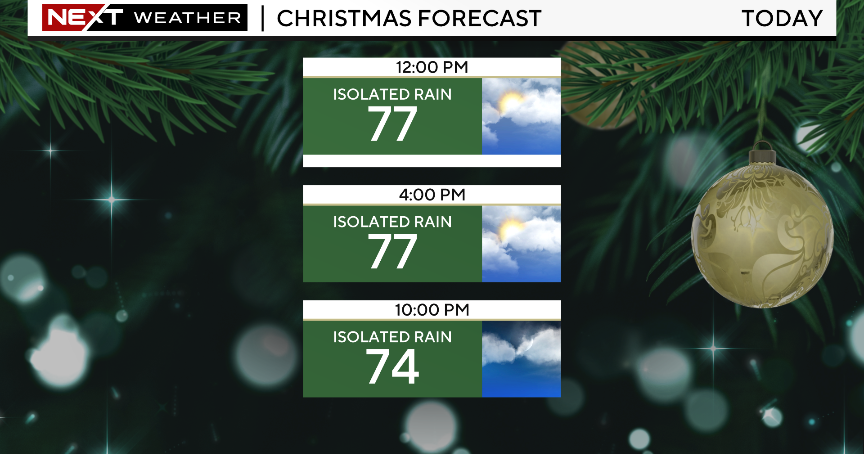Hurricane Rafael leaves Cuba reeling, moves into Gulf of Mexico
Parts of Cuba are reeling in the wake of Hurricane Rafael, a powerful Category 3 storm that ripped across the island and knocked out the country's power grid this week after ravaging parts of the Cayman Islands and Jamaica. The storm had weakened somewhat since making landfall Wednesday, and by Thursday it had changed directions over the southeastern Gulf of Mexico and was moving away from Cuba, according to the National Hurricane Center.
The exact magnitude of Rafael's impact on Cuba remained unclear Thursday afternoon. Cuban Prime Minister Manuel Marrero Cruz reported "major damages" in Havana and two provinces in the surrounding region, but he did not provide details about the damages. Cuban President Miguel Díaz-Canel separately said the government had not confirmed any deaths linked to Rafael.
"This morning we assessed the damage caused by Rafael after passing through our country. There are major damages in Artemisa, Mayabeque and Havana. Recovery work is already underway," Cruz said in a social media post.
Electrical workers were continuing to fix the national energy system, the prime minister added, and portions of it had been restored by Thursday afternoon. But he said parts of western Cuba hit hardest by Rafael would likely have to wait longer.
The Cuban Electric Union reported an electrical line was back up and running from Matanzas to Holguín, a stretch of land east of Havana that extends more than 400 miles. "Evaluation of transmission networks in the West continues," the union said.
Cuban Public Health Minister José Ángel Portal Miranda traveled to Artemisa Thursday to assess damages in Rafael's wake and evaluate the province's response to the storm. Basic services remained operational there, Miranda said.
The health minister shared images of some impacts to the region, including one that showed the inside of a partially collapsed room and another of a hallway apparently covered in shattered glass. It was unclear what purpose the building normally serves. The president said hospitals, schools, service centers and residential homes in Artemisa sustained the worst damages from the hurricane.
On Wednesday evening, massive waves lashed at Havana's shores as sharp winds and rain whipped at the historic cityscape, leaving trees littered on flooded roads. Much of the city was dark and deserted.
As it plowed across Cuba, the storm slowed to a Category 2 hurricane chugging into the southeastern Gulf of Mexico, said the Miami-based hurricane center in an advisory early Thursday.
The center said Rafael's center was about 200 miles west-northwest of Havana, Cuba and 215 miles west of Key West, Florida at 10 a.m. EST. Traveling northwest at fairly slow pace, the storm's maximum sustained winds had dropped to 100 mph. It had packed 115 mph winds, and higher wind gusts, when it struck Cuba.
According to the hurricane center, "Rafael is expected to continue to move away from western Cuba over the southeastern Gulf of Mexico this morning. Rafael is then forecast to move over the southern Gulf of Mexico for the next few days."
Forecasters expected Rafael to weaken more while moving over the Gulf. Cuba could continue to see rainfall linked to the storm, they warned, with additional rain of 2 to 4 inches likely for western parts of the island. If that happens, the total accumulation linked to Rafael could amount to a foot of rain in some areas.
The latest forecast models suggest Rafael will remain in the Gulf and either weaken over water or move into Mexico at some point next week, CBS News meteorologist Nikki Nolan said early Thursday. No direct impacts to land were expected for the U.S., Nolan added.
Many Cubans had a strange sense of déjà vu after a rocky few weeks in the Caribbean nation.
In October, the island was hit by a one-two punch. First, Cuba was roiled by island-wide blackouts stretching on for days, a product of the island's energy crisis. Shortly after, it was slapped by another powerful hurricane that killed at least six people in the eastern part of the island.
It stoked discontent already simmering in Cuba amid an ongoing economic crisis, which has pushed many to migrate from Cuba.
While the State Department issued a travel warning for Cuba because of the storm, the Cuban government also raised an alarm, asking citizens to hunker down.
Classes and public transport were suspended on parts of the island and authorities canceled flights in and out of Havana and Varadero. Thousands of people in the west of the island were evacuated as a preventative measure, and many more, like Silvia Pérez, a 72-year-old retiree living in a coastal area of Havana, scrambled to prepare.
"This is a night I don't want to sleep through, between the battering air and the trees," Pérez said. "I'm scared for my friends and family."
The concern came after the storm knocked out power in the Cayman Islands and Jamaica, where it also unleased flooding and landslides.
Rafael is the 17th named storm of the season. It is among eight hurricanes in the last 30 years that developed during the month of November and went on to reach major hurricane strength, said Nolan. Three of those eight hurricanes eventually made landfall in the U.S., but, by then, they were no longer major hurricanes.
The National Oceanic and Atmospheric Administration predicted the 2024 hurricane season was likely to be well above average, with between 17 and 25 named storms. The forecast called for as many as 13 hurricanes and four major hurricanes.
An average Atlantic hurricane season produces 14 named storms, seven of them hurricanes and three major hurricanes.







